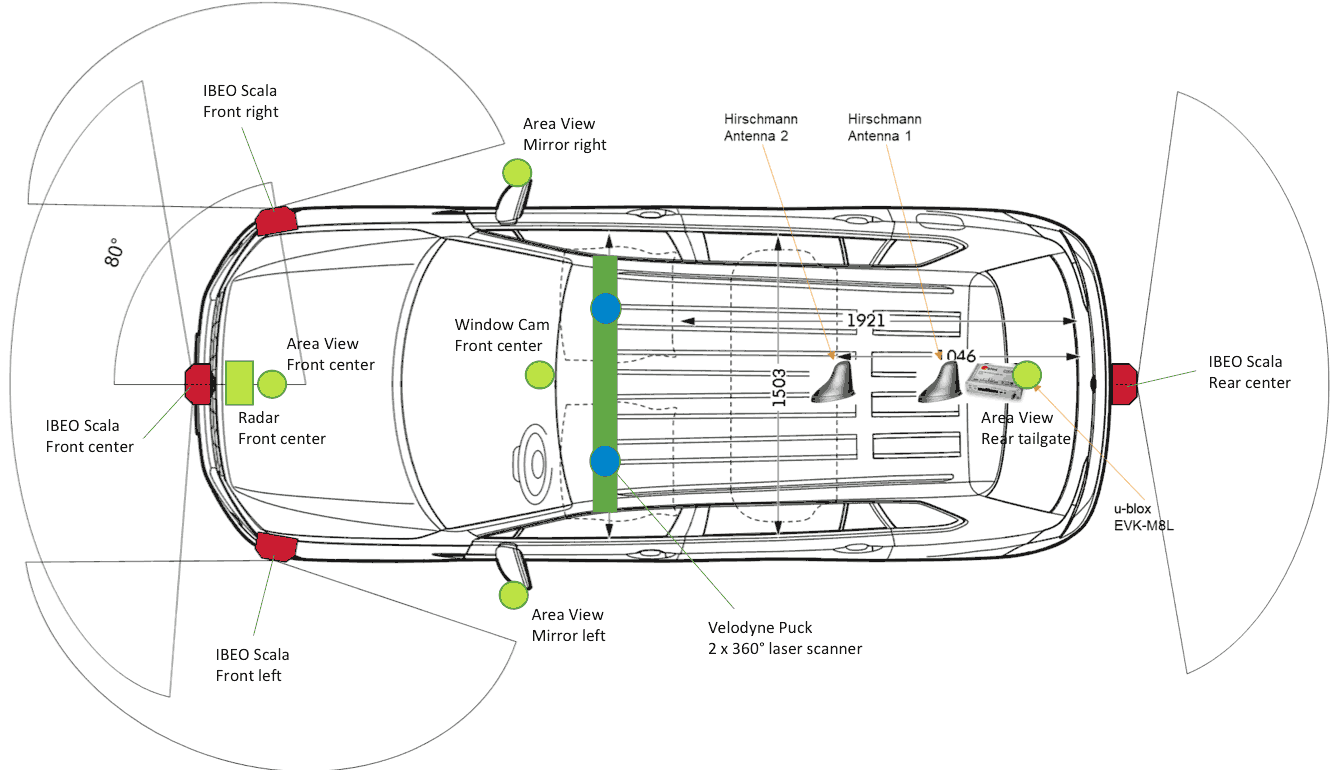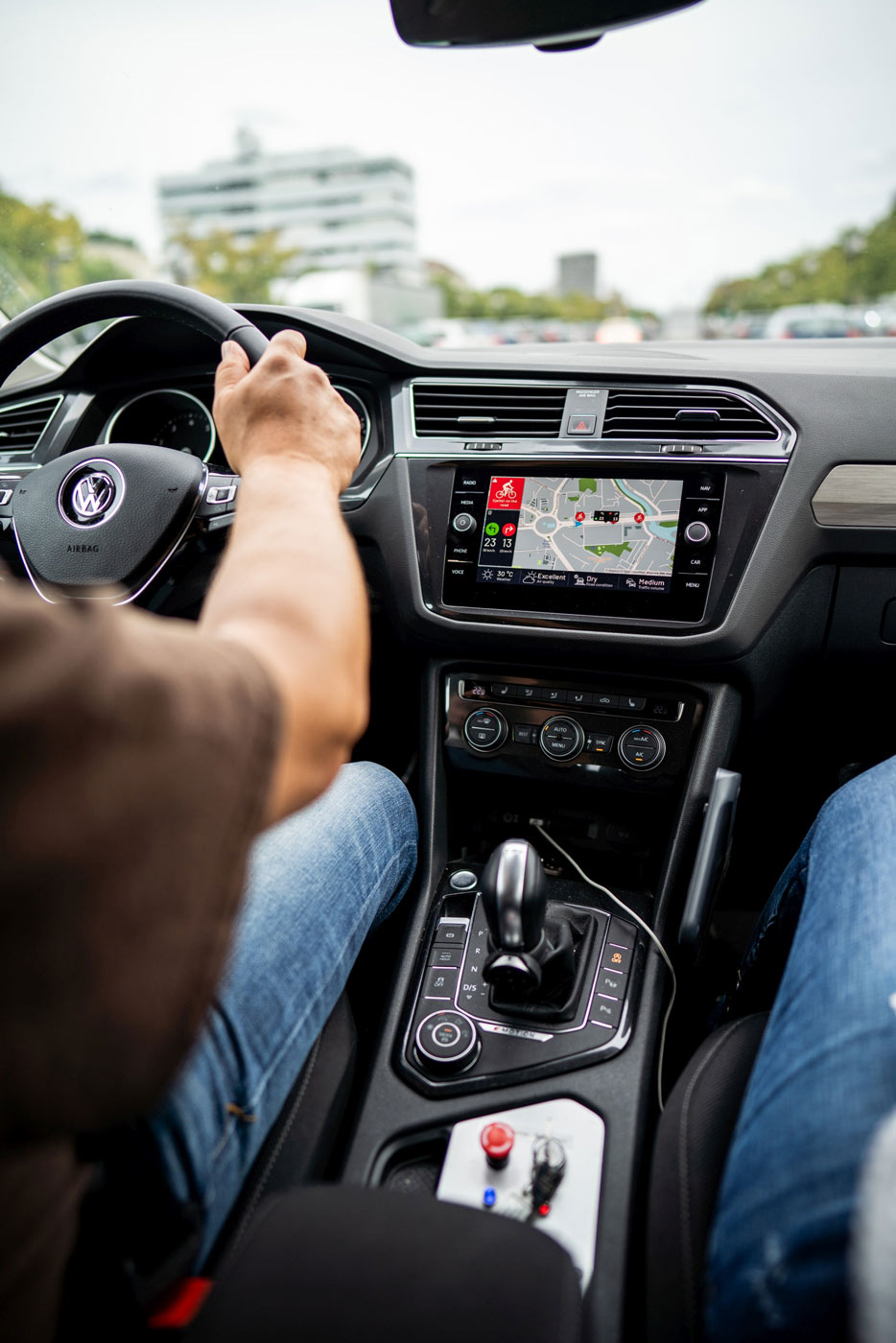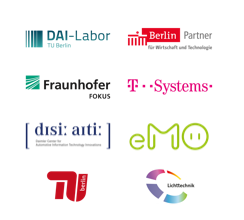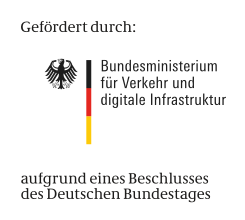By intelligent vehicles, we mean automated and connected vehicles that are able to capture the environment and communicate with it (i.e. infrastructure and other vehicles). This allows vehicles to reach relevant conclusions and forecasts based on the information received, through which they generate and execute the right driving decisions in real-time.
Intelligent Vehicles
Future on board

Communicative and autonomous
The most important building blocks of the mobility of the future
Towards achieving these tasks, intelligent vehicles are equipped with a selection of different sensors in the form of cameras, radar, LiDAR, GPS, etc., as well as actuators for lateral and longitudinal guidance, signalization control, vehicle gear control or pedal level transmitter. For real-time communication, the ETSI ITS-G5 standard based on the IEEE 802.11p WLAN standard is used whereas in the future 5G support will be available. Currently, the 4G/LTE network is used to communicate large amounts of data or information that is not time-critical.
Sensors and actuators
Perceiving the environment and the surroundings
A powerful on-board computer is responsible for the rapid processing of all the information. For this purpose, a software stack is provided. The stack brings together all collected information about the current situation, derives predictions of the future states, plans suitable driving maneuvers and controls the vehicle accordingly. In this way, the vehicles can be driven even more safely, efficiently and sustainably.




